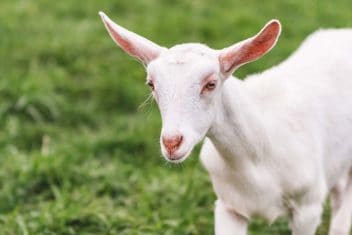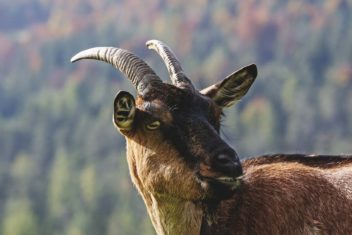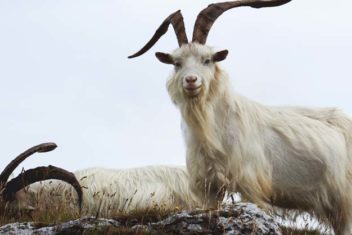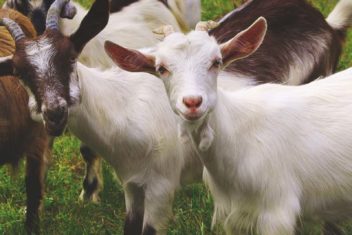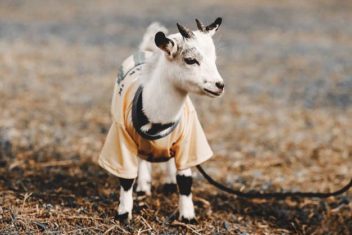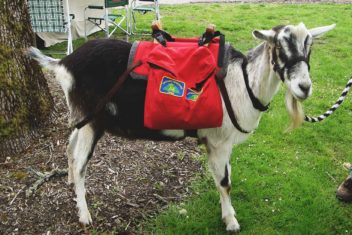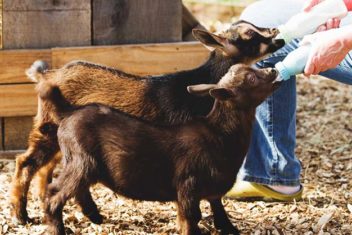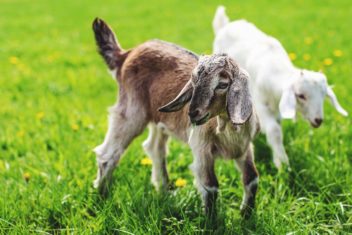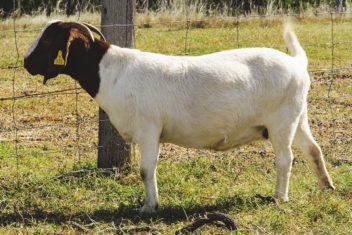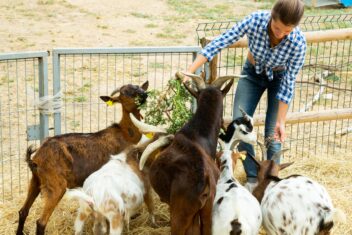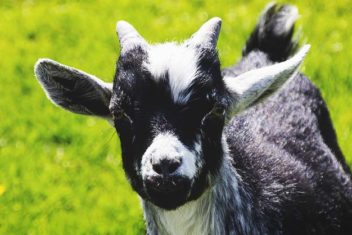The wonderful world of goats brings with it terminology that may be a bit unfamiliar to the aspiring new goatherd. Our goat glossary of strange, yet unique, goat terms will help get you up to speed with some common goat-speak.
Different Names for Goats
If you’ve ever searched online for goats to purchase, you’ve probably come across a plethora of different names our goatie friends tend to go by, in addition, to simply ‘goat.’
1. Billy Goat
A billy goat is usually an intact (uncastrated) male goat. More often than not, a billy goat is also an older male buck. Young goats aren’t often referred to as billies, but you may hear it from time to time.
Goat lovers aren’t keen on the term Billy goat, so opt for buck or buckling instead when conversing with enthusiasts.
2. Brush Goats
In the United States, goats weren’t categorized very well. For a long time, unknown breeds were simply referred to as brush goats.
And it isn’t surprising where the term came from. Goats were used for “landscaping” or clearing brush on the homestead.
3. Caprine
If you’re looking for the technical term for goat, you’ll find the term caprine. The term comes from the Latin word caprinus.
Some people confuse goats with cattle or bovine, which is the term for cows.
4. Chevon
Chevon is the french term for goat. You will also find this term on cheeses made from goat milk.
5. Nanny Goat
A nanny goat is the opposite of the billy goat. Nanny goats are usually older female goats that have given birth before. Another term that isn’t a favorite amongst goat lovers. If you are chatting with an experienced goatherd, consider using the term doe.
Anatomical Terms
Many of the anatomical terms associated with goats are similar to those of cattle or ruminants, but the terms below may come up more often than others. So if you plan on participating in goat communities, become familiar with these:
1. Beard
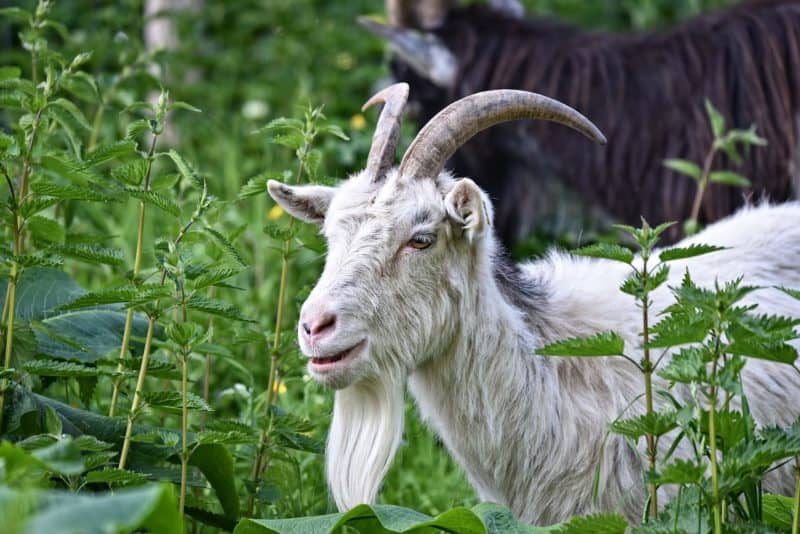
Male goats, or bucks, have beards. And they are exactly what you are expecting: a long lock of hair under their chins. Bucks grow beards gradually.
Males most commonly have beards, but there are some female goats that grow beards as well.
2. Bleat
Ok, so this isn’t an anatomical term, but it’s important nonetheless. Bleating is the term used to describe the sound a goat makes. That baaa baaa sound. When you hear that, your goat is bleating.
3. Cleat
A goat’s hoof is unlike that of a horse…in fact, it split into two parts, similar to a deer’s hooves. The two halves of a goat hoof are referred to as cleats.
4. Horns
While you are probably familiar with the term horn, it’s important to know that these are not the same as antlers. Horns may have blood vessels in them, and goats do not shed their horns, unlike deer who have antlers that are shed.
5. Poll
The poll is the point directly between the ears of the goat. It is also often between the horns.
6. Polled
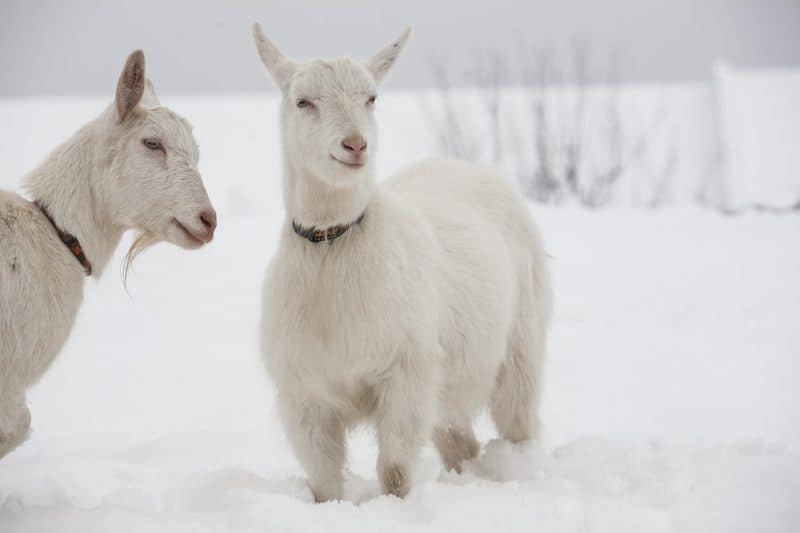
A polled goat is a goat that was born hornless. Some people love to breed this into their goats because they don’t want goats with horns.
7. Ruminant
A ruminant is any animal that has a stomach consisting of four compartments. The compartments are called the rumen, reticulum, omasum, and abomasum.
Ruminants regurgitate their food and chew it as “cud” to aid in digestion, along with enzymes.
8. Wattle
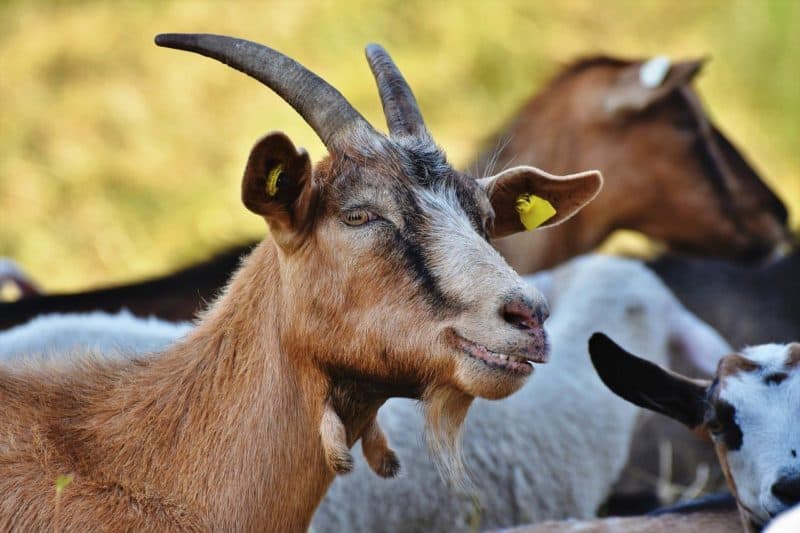
Yes, goats may have wattles, similar to our feathered friends. Usually, they are fur covered appendages hanging from the neck of some dairy goats.
Wattles have no known purpose on a goat and are similar to that of a skin tag. Think of it as an extra bit of decor or bling on your goat.
Kings and Queens and All Their Kids

You know what a billy and nanny are, but what about the more technical terms for goats?
1. Buck
Male goats are referred to as bucks, by the pros. You won’t often hear them called anything other than this. Bucks are intact male goats, usually ready for breeding.
2. Buckling
Bucklings are young bucks that have not yet been castrated and are not of breeding age. If you want a young buck, search for the term buckling online, and you can find lots of inexpensive bucks from dairy farms.
3. Doe
Rather than nanny, refer to your female goats as does. Does are usually older female goats that are of breeding age.
Does can have more than one kid, and often have twins or triplets.
4. Doeling
As you might have guessed, doelings are the female counterpart of the buckling. It is a young doe that has not reached breeding age.
5. Kids
Kids will be kids, and the same goes for goats. Young goats, usually under a year old, are referred to as kids. And when a doe goes into labor, it is called kidding.
6. King
A king is usually the main buck in a herd. He is lower on the totem pole than the alpha queen, except during rut.
7. Queen
The queen is the alpha female in a goat herd. She rules the roost, leads the herd, and is usually an older doe. She’s often in charge until she is either too old, ill, or removed. Once any of those things happen, one of her daughters often replaces her.
8. Wether
A wether is a castrated male goat. Males that are not intended for breeding are wethered to prevent buck behavior and mating. These are often sold for meat or as pets.
So there you have it, your basic goat glossary of terms you need to know if you want to sound like a pro right off the bat. If you happen to use the term nanny or baby goat, your greenness will show through.
The good news is that the goat world is a kind one, and most goat lovers will be happy to teach you about what they know. So, no worries!

